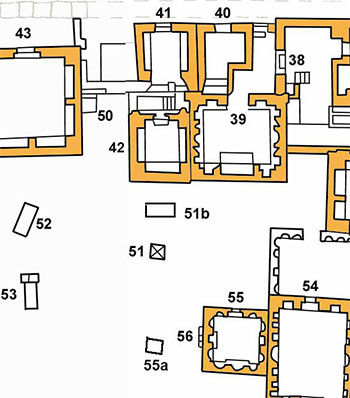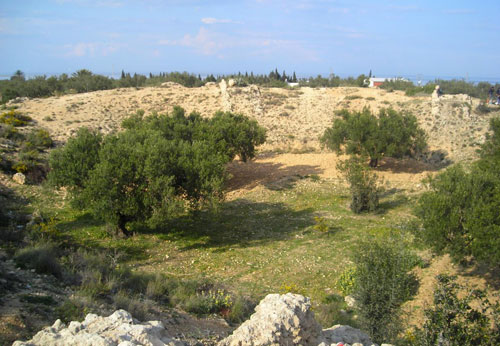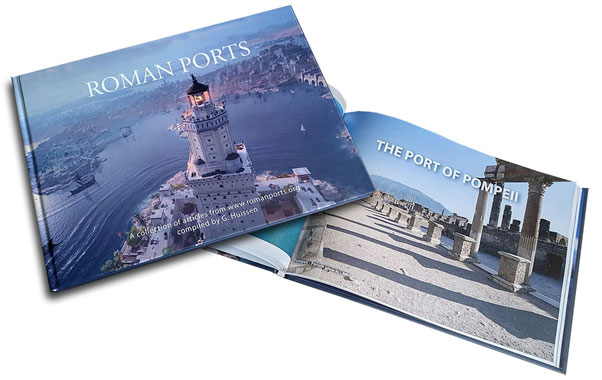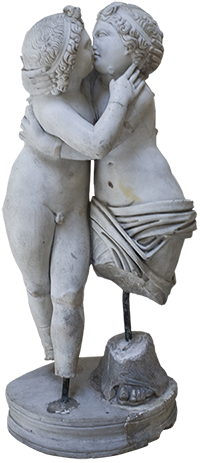Tomb 50
 Tomb 50 lies in the space between tombs 41, 42 an 43. It was partly covered by tomb 41bis, which is not visible anymore.
Tomb 50 lies in the space between tombs 41, 42 an 43. It was partly covered by tomb 41bis, which is not visible anymore.
Also tomb 50 cannot be seen today.
Tomb 50 was not turned towards the Via Severiana, but towards the open space behind, the so-called "Field of the Poor".
The grave had the following inscription on a marble slab of 30 x 36 cm:
D(is) M(anibus)
TI(beri) CLAVDI TI(beri) F(ili) PRIMI
GENI FECIT TI(berius) CL(audius) QVI
NTILIANVS FILIVS ET
A(ulus) RVTILIVS PVDENS
FILIASTER ET LIBERTI
EX PORTIONIBVS SVIS FECERVNT
The text says: To the divine Manes of Tiberius Claudius Primigenius, son of Tiberius. Tiberius Claudius Quintilianus, his son, and Aulus Rutilius Pudens, his stepson, and his freedmen made (this monument) from their part of the heritage.
Tomb 50 dates from the time of Hadrian.

In the back tomb 54 and 55.
- Sources
- Russel Meigs - Roman Ostia, At the Clarendon Press 1973
- Guido Calza - Necropoli nell'Isola Sacra'(1940)
- Dr. Jan Theo Bakker.
- Hilding Thylander - Inscriptions du port d'Ostie (Lund C W K Gleerup 1952).
- Ida Baldassarre, Irene Bragantini, Chiara Morselli and Franc Taglietti - Necropoli di Porto, Isola Sacra (Roma 1996).
Isola Sacra Index

Speciale sectie over de Romeinse begraafplaats van Portus (Engels)....
Read more ...The resurfaced fleet of Pisa

In 1998, an incredible archaeological heritage was discovered by accident near the Pisa San Rossore railway station....
Read more ...Leptiminus

At the site of present-day Lamta on Tunisia's east coast, there was already a port city named Leptis Minor ....
Read more ...Roman maritime trade law

Roman law is the finest monument that Rome bequeathed to Western Europe....
Read more ...Sullecthum (Salakta)

In the Sahel, in the Tunisian province of Madhia, we find by the sea the small town of Salakta....
Read more ...

 We are committed to providing versions of our articles and interviews in several languages, but our first language is English.
We are committed to providing versions of our articles and interviews in several languages, but our first language is English.